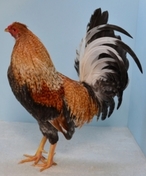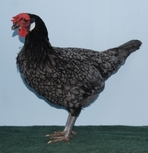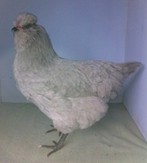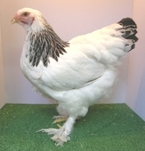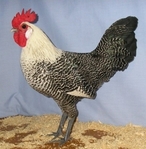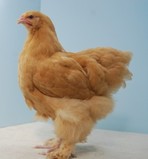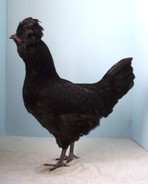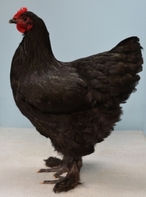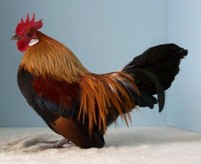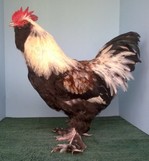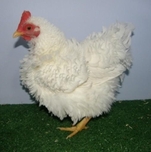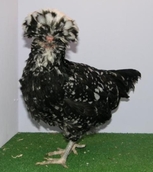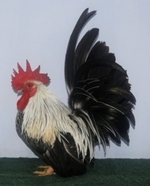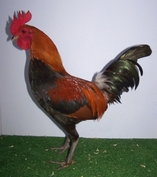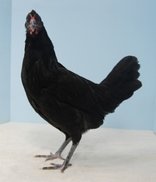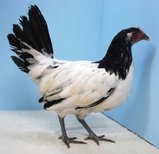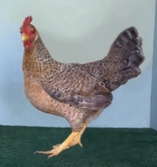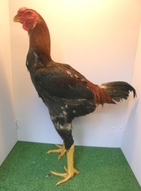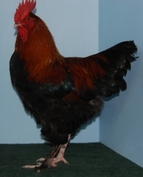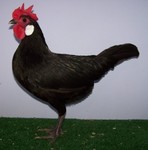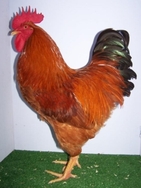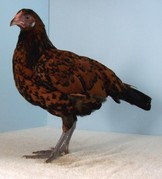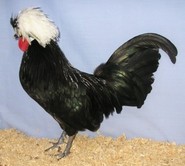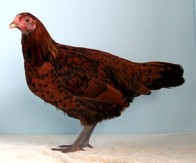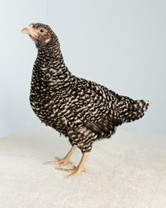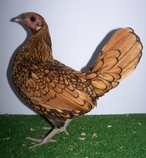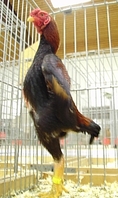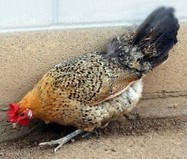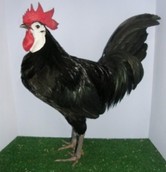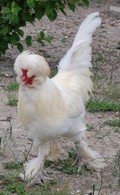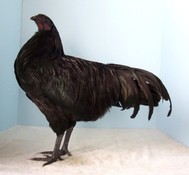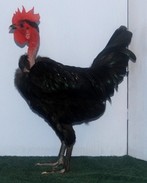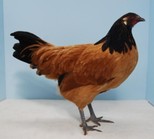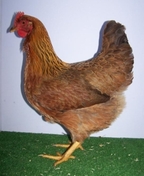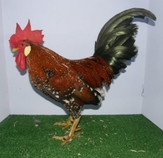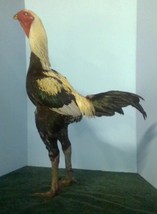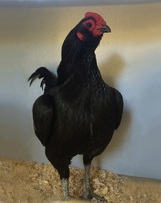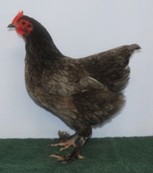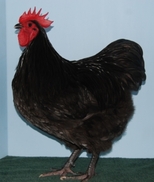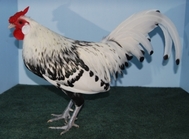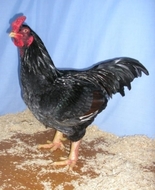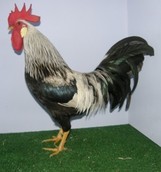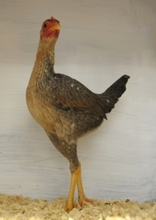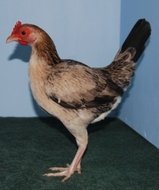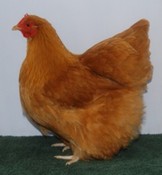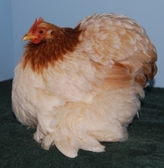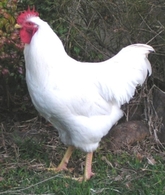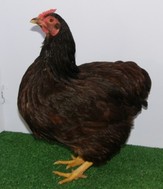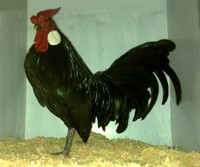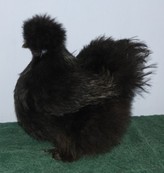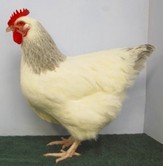Breed Basics
Rare Breeds
|
American Game
Origin: USA Egg Colour: White, cream, light brown Recognised Colours: Reds; Duckwings; Dark Greys; Brown Reds; Ginger Breasted Ginger Reds; Blues and Duns; Piles; Whites; Blacks; Brassy Backs, Furnaces and Polecats; Spangles; Creels; Birchens Fact: In undubbed birds, the comb is acceptable in straight, pea or rose, a reflection of the mixed ancestry of this breed. |
|
Asil
Origin: Indian Egg Colour: Tinted Recognised Colours: No fixed colours Fact: Reputed to be the most pugnacious breed of domestic chicken. |
|
Cochin
Origin: Asiatic Egg Colour: Tinted Recognised Colours: Buff; Black; Blue; White; Cuckoo; Partridge; Gold Laced; Gold Crele; Silver Laced Fact: Like the Brahma, originally a popular dual purpose breed of which the original stock also died out in Australia. Re-created here, again with varying degrees of success. |
|
Dutch Bantam
Origin: The Netherlands Egg Colour: Tinted Recognised Colours: Gold Partridge; Silver Partridge; Yellow Partridge; Blue Silver Partridge; Blue Yellow Partridge; Blue Partridge; Red Shouldered White; Cuckoo Partridge; Cuckoo; Black; White; Blue; Lavender Fact: A true bantam with no large fowl counterpart. Imported into Australia in 2014 |
|
Japanese
Origin: Japan Egg Colour: White Recognised Colours: White; Red; Black; Blue; Lavender; Birchen; Black-tailed White; Black-tailed Buff; Cuckoo; Grey; Mottled; Buff Columbian; Brown Red; Old English Game colours Fact: A purely ornamental breed. Well known for its very short shanks. Also standardised in a Frizzled variety. |
|
Polish
Origin: European Egg Colour: White Recognised Colours: White crested Black; White crested blue; White crested Cuckoo; White crested Splash; Black; Buff; Cuckoo; White; Lavender; Splash; Silver Laced; Gold Laced; Chamois Fact: Varieties fit into three basic divisions: White Crested, which must not have a beard or muff; Self colours, which may have a beard and muff or not; and Laced varieties, which must have a beard and muff. All varieties may also have frizzled feathers. |
Rare Varieties
|
Belgian
Origin: Belgium Egg Colour: White or tinted Eligibility Criteria: Barbu d’Anvers - all eligible except normal quail, lavender and black; Barbu d’Uccle - all eligible except millefleur, black and black mottled; Barbu de Watermael - all eligible Fact: Barbu d’Anvers - always rose combed and clean legged; Barbu d’Uccle - always single combed and feather legged; Barbu de Watermael - always crested and clean legged. Each of the above has a rumpless version known respectively as Barbu du Grubbe, Barbu d'Everberg and Barbu Bosvoorde |
|
Hamburgh
Origin: British/Dutch Egg Colour: White Eligibility Criteria: In large fowl all varieties except Silver Spangled. Gold Spangled, Silver Pencilled, Gold Pencilled, Black, White & Blue large fowl may be shown. All colour varieties of bantams may be shown. Fact: Spangled varieties were developed in England, while the Pencilled varieties were developed in the Netherlands. Popular exhibition breed but some varieties extremely rare. |
|
Leghorn
Origin: A Mediterranean breed from Italy Egg Colour: White Eligibility Criteria: All large varieties eligible except white and brown; all bantam varieties eligible except white, black and brown Fact: The white variety was once the most popular laying breed in Australia and was used to produce first cross layers when mated with Australorps. |
|
Old English Game
Origin: British Egg Colour: Tinted Eligibility Criteria: Black-red partridge, blue-red dark leg, ginger, brown-red and duckwings are ineligible in large fowl; black-red, pile, duckwing, blue-red, ginger, brown-red, black, birchen, grey and crele are ineligible in bantams. Muffs and tassels in any colour are eligible in both large and bantam Fact: Old English Game bantams are one of the most popular of all exhibition breeds. |
|
Silkie
Origin: Asiatic Egg Colour: Tinted to cream Eligibility Criteria: In large fowl all except white (bearded and non bearded) and partridge (non bearded) are eligible; in bantams all except white are eligible Fact: The Silkie has black skin and flesh which is considered to have medicinal properties in some cultures. |
|
Wyandotte
Origin: American Egg Colour: Tinted Eligibility Criteria: In large fowl all colours except white, silver laced and gold laced; in bantams all colours except white, columbian, partridge, buff, silver laced and gold laced Fact: The silver laced was the first variety of the Wyandotte, the whites coming as sports from this variety. |
The Rare Poultry Breeders' Association - Promoting rare breeds and rare colour varieties of pure bred domestic fowl
